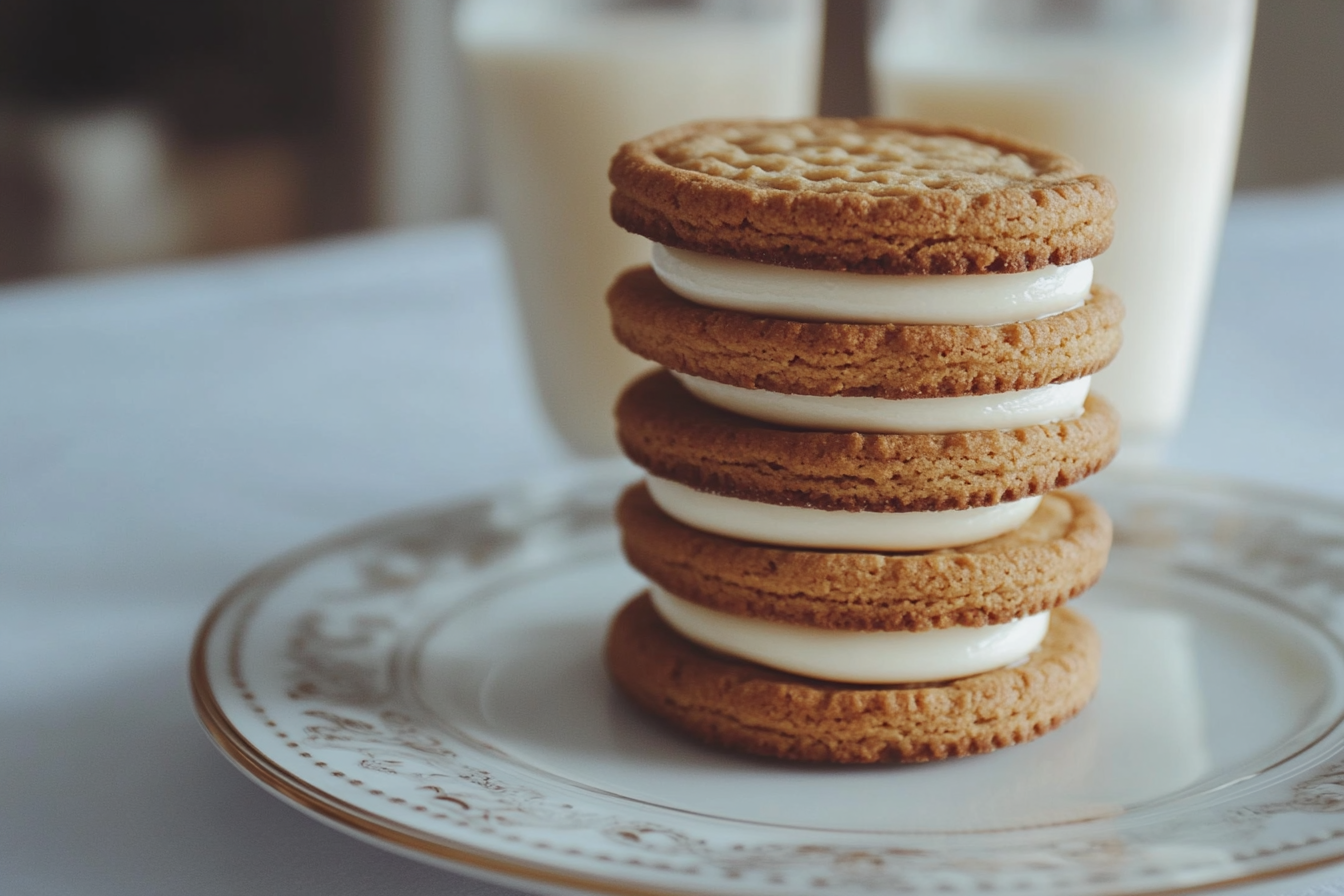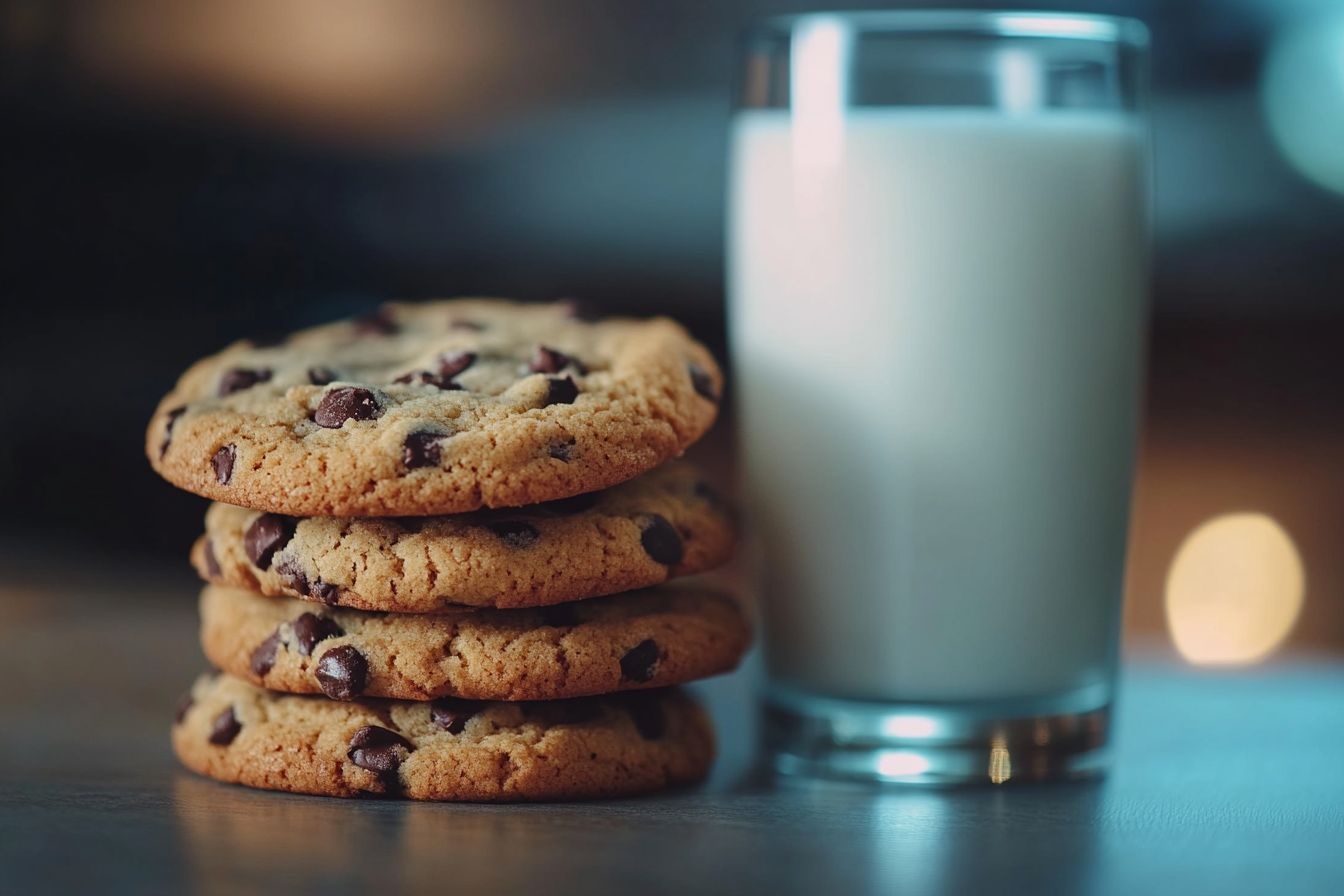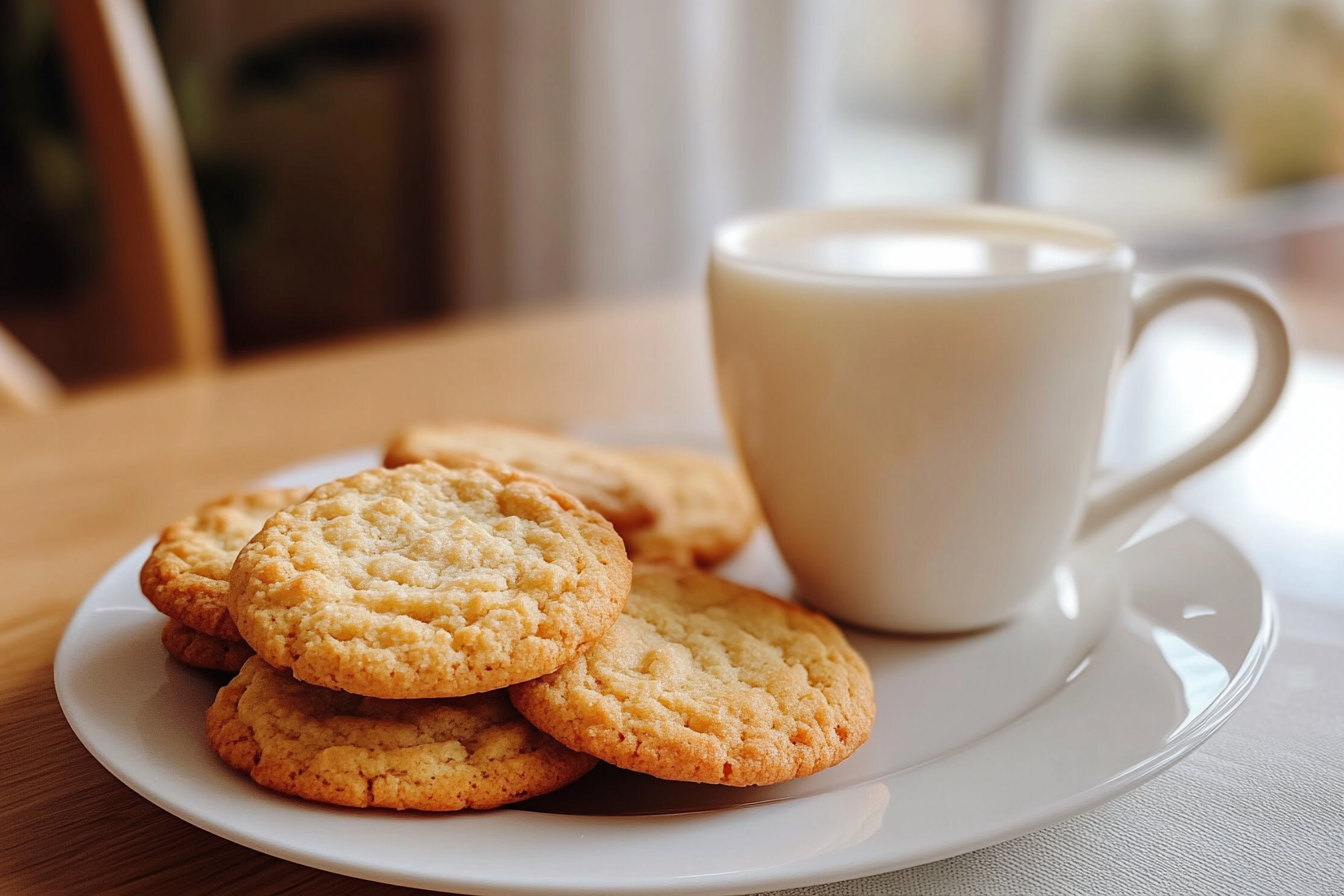Milk cookies are a timeless treat, cherished for their soft texture, rich flavor, and versatility. Whether you’re a baking enthusiast or a beginner, learning how to make these cookies will add a delightful addition to your recipe collection. This guide will walk you through the best ways to prepare these cookies, popular variations, baking tips, the history behind them, and even how to pair them with beverages for the perfect dessert experience.
What Are These Soft, Delicious Cookies?
These cookies are soft, melt-in-your-mouth treats made with milk or condensed milk as a key ingredient. The use of milk creates a rich, creamy texture and gives these cookies a smooth sweetness. They are similar to sugar cookies but with a unique twist, thanks to the milk. These cookies are great for any occasion, from simple family gatherings to elegant parties.
For inspiration on how to bake beautifully designed cakes alongside your cookies, check out these birthday cake ideas that can complement your dessert table.
Why Are These Cookies So Popular?
There are several reasons why these cookies are beloved by many:
- Simple ingredients: With just a few ingredients, anyone can make delicious cookies in no time.
- Versatility: They can be customized with different flavors, toppings, or mix-ins like chocolate chips or nuts.
- Perfect texture: The addition of milk or condensed milk makes these cookies soft and chewy.
- Nostalgia: Many people associate them with childhood memories of home-baked treats. Their comforting flavor and simplicity make them an enduring favorite across generations.
If you’re thinking of expanding your dessert repertoire, these cookies pair perfectly with savory dishes. For instance, you might enjoy these cookies as a sweet follow-up to a hearty brisket sandwich for a balanced meal.
The History and Evolution of These Cookies
The Origins
These cookies have a long history in various cultures around the world. Their origins can be traced back to simple home baking, where milk was used as a primary ingredient in cookie recipes to add richness and moisture. Milk was an accessible and affordable ingredient, making these cookies popular in many homes during times when other dairy products, such as cream or butter, were harder to come by.
Milk-based sweets have also been a staple in European and Middle Eastern cultures, where milk cookies were often paired with tea or coffee. From Italy’s biscotti to the Middle East’s ma’amoul cookies, these milk-based treats were used to celebrate special occasions.
Modern-Day Cookies
Today, these cookies have become a modern-day classic. Bakers have introduced new flavors, textures, and variations, incorporating ingredients like condensed milk, buttermilk, and even non-dairy milk alternatives to cater to different tastes and dietary preferences. These cookies are now seen in bakeries around the world, and their presence on social media, with variations like stuffed cookies, colored cookies, or topped with glazes, has expanded their popularity.
In North America, the trend of dunking cookies in milk is seen as a nostalgic and comforting ritual, especially during the holiday season.
Classic Recipes for Soft Cookies
Traditional Cookies
Here’s a classic recipe that is easy to follow and results in soft, delicious cookies every time:
- Ingredients:
- 2 cups all-purpose flour
- 1/2 cup sugar
- 1/2 cup milk
- 1 egg
- 1 tsp vanilla extract
- 1/2 cup butter, softened
- 1 tsp baking powder
- Pinch of salt
Instructions:
- Preheat your oven to 350°F (175°C).
- Cream the sugar and butter together until light and fluffy.
- Add the egg, vanilla, and milk, mixing well.
- Gradually fold in the flour, baking powder, and salt until the dough forms.
- Shape the dough into small balls, place on a baking sheet, and bake for 12-15 minutes until lightly golden.
For more savory ideas to pair with your cookies, you can also explore recipes like chickpea pasta, which balances the sweet treat perfectly.
Delicious Variations Using Condensed Milk
Condensed milk is often used to make these cookies richer and more flavorful. Here’s how to make this variation:
- Ingredients:
- 1/2 cup condensed milk
- 1/2 cup butter, softened
- 2 cups all-purpose flour
- 1 tsp vanilla extract
Instructions:
- Cream the butter and condensed milk together.
- Stir in the vanilla extract.
- Gradually add the flour and mix until a dough forms.
- Shape into cookies and bake at 350°F for 12-15 minutes.
Popular Variations of These Cookies
Want to give your cookies a unique twist? Here are some popular variations:
- Chocolate Chip Cookies: Add 1 cup of milk chocolate chips to the dough for a sweet and chocolaty version.
- Pistachio Cookies: Mix in 1/2 cup of chopped pistachios to add a nutty flavor and crunchy texture.
- Vegan Cookies: Swap regular milk for almond or soy milk, and replace butter with coconut oil for a vegan-friendly treat.
- Oatmeal Cookies: For a hearty variation, add rolled oats and raisins to the dough. Oatmeal adds texture, fiber, and a slight chewiness to the cookies.
Advanced Flavor Variations
For adventurous bakers, experimenting with new ingredients can take your cookies to the next level. Here are some more advanced variations to try:
- Spiced Cookies: Add cinnamon, nutmeg, and a dash of cloves to the dough for a warm, autumn-inspired flavor. These cookies pair beautifully with a hot cup of spiced tea or chai.
- Matcha Cookies: Incorporate matcha powder into your dough for a subtly sweet and earthy flavor with a vibrant green color. Matcha cookies are perfect for tea lovers and pair well with green tea.
- Salted Caramel Cookies: Swirl caramel into the cookie dough and sprinkle with sea salt before baking for a delicious balance of sweet and salty flavors.
- Lavender Honey Cookies: Add dried culinary lavender and a touch of honey to the dough for a sophisticated flavor that pairs well with herbal teas.
Cookie Decoration Ideas
Decorating your cookies can add an extra layer of fun, especially if you’re preparing them for special occasions or holidays. Here are some simple ideas:
- Glaze Topping: Mix powdered sugar with a few teaspoons of milk to create a sweet glaze that can be drizzled over cooled cookies.
- Sprinkles: Add colorful sprinkles to the cookie dough before baking or after applying a glaze for a festive look.
- Chocolate Drizzle: Melt chocolate (white, dark, or milk) and use a spoon to drizzle it over your cookies for a professional bakery finish.
- Icing Designs: Use royal icing to create detailed designs such as holiday patterns, flowers, or shapes. This works especially well if you’re making cookies for events.
The Science Behind This Perfect Dessert Pairing
Why Cookies and Milk Pair So Well Together
There’s more than nostalgia behind the popularity of cookies and milk. Scientifically, the fats and sugars in these cookies dissolve when dipped into milk, creating a balanced flavor profile. The creaminess of the milk cuts through the sweetness of the cookie, and the fat in the milk helps dissolve some of the fats in the cookie, enhancing the overall mouthfeel.
Additionally, milk contains casein, a protein that softens the cookies when dipped, making them even more enjoyable to eat. This combination of fat, sugar, and protein is what makes milk and cookies such a universally beloved pairing.
Cultural Significance of Milk and Cookies
The tradition of serving cookies with milk has deep roots, especially in Western cultures. For example, the practice of leaving cookies and milk for Santa Claus during Christmas Eve is a tradition celebrated in many homes. This gesture is believed to have started in the 1930s during the Great Depression when families would leave out a treat for Santa as a symbol of generosity.
Beyond the holiday season, cookies and milk have become a popular snack in American pop culture, symbolizing comfort and nostalgia. Whether it’s a scene in a movie where characters bond over cookies or an ad featuring children enjoying a snack after school, the duo of cookies and milk resonates with audiences of all ages.
Baking Tips for Perfect Cookies
Common Mistakes to Avoid
While these cookies are relatively easy to make, there are some common mistakes that can affect the final result. Here’s how to avoid them:
- Overmixing the Dough: Mixing the dough too much can result in tough cookies. Be sure to mix until just combined to keep the cookies tender.
- Using Cold Butter: Butter should be softened to room temperature for best results. Cold butter won’t cream properly with the sugar, leading to dense cookies.
- Overbaking: These cookies should be lightly golden at the edges, not brown. Overbaking will result in a hard, dry cookie, so keep an eye on the timer.
- Inconsistent Sizes: When shaping the dough, try to keep the cookies uniform in size. This ensures even baking and prevents some cookies from burning while others remain undercooked.
How to Keep Cookies Soft
To keep your cookies soft for days after baking, store them in an airtight container with a slice of bread. The bread helps maintain moisture, preventing the cookies from drying out. Additionally, underbaking the cookies slightly by a minute or two will leave them softer once they cool.
How to Store and Freeze Cookies
Proper storage is essential for keeping your cookies fresh and delicious. Here are some tips:
- Room Temperature: Store cookies in an airtight container at room temperature for up to a week. Adding a slice of bread can help maintain moisture.
- Refrigeration: While these cookies typically do not require refrigeration, storing them in the fridge can extend their shelf life to about two weeks.
- Freezing: Cookies freeze exceptionally well. Simply place them in a single layer on a baking sheet to freeze, then transfer them to a freezer-safe bag. They can last for up to three months. When ready to eat, thaw the cookies at room temperature or warm them in the oven for a few minutes to refresh their texture.
If you plan to freeze cookie dough, scoop the dough into portions first, place them on a baking sheet, and freeze. This allows you to bake fresh cookies any time by simply popping the frozen dough into the oven.
Frequently Asked Questions About These Cookies
- What makes these cookies different from regular cookies?
The addition of milk or condensed milk gives these cookies a soft, moist texture that sets them apart from traditional sugar cookies. - How should you store these cookies?
Store them in an airtight container at room temperature for up to a week. You can also freeze them for up to three months. - Can you make these cookies without butter?
Yes, you can substitute butter with coconut oil or another plant-based fat for a dairy-free version. - What type of milk is best for these cookies?
Whole milk provides the richest flavor, but you can also use almond milk or soy milk as dairy-free alternatives.
Conclusion
These cookies are a versatile and delicious dessert option that can be easily customized to suit your preferences. Whether you opt for the traditional recipe or experiment with variations, these cookies are sure to be a hit. From healthier alternatives to unique flavor combinations, the possibilities are endless. Try pairing them with your favorite drink or serving them as a sweet ending to a meal. Happy baking!



